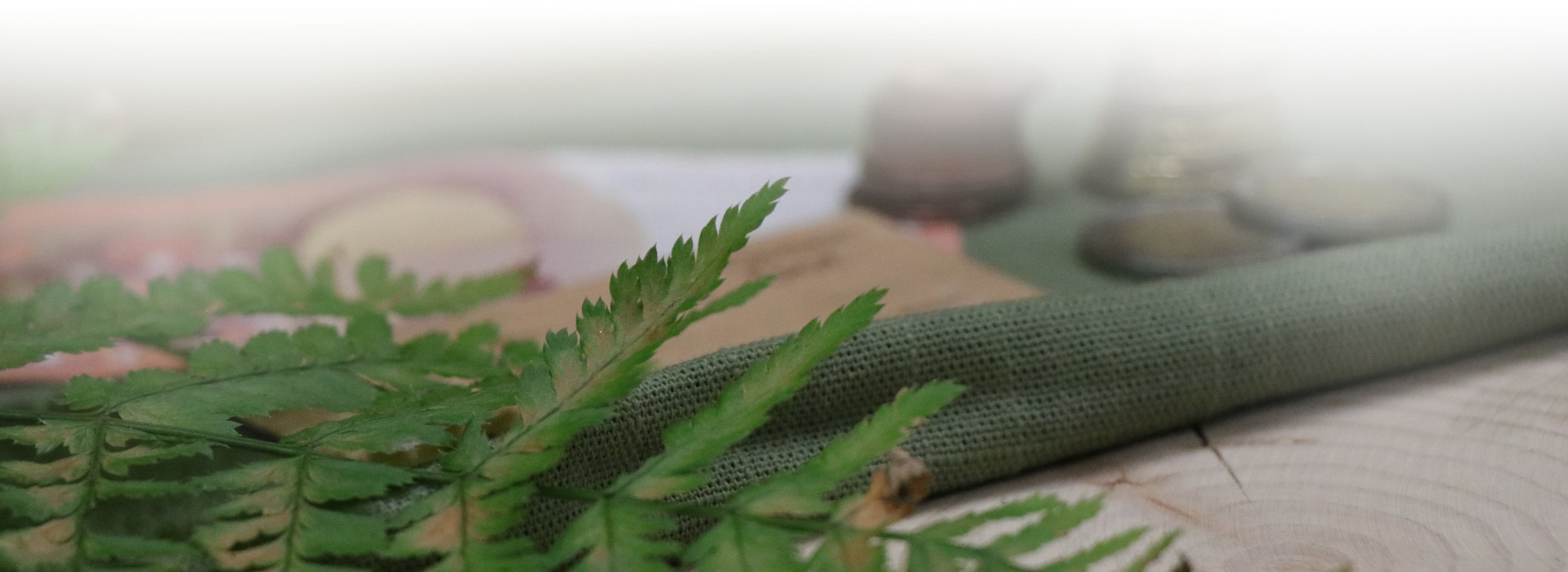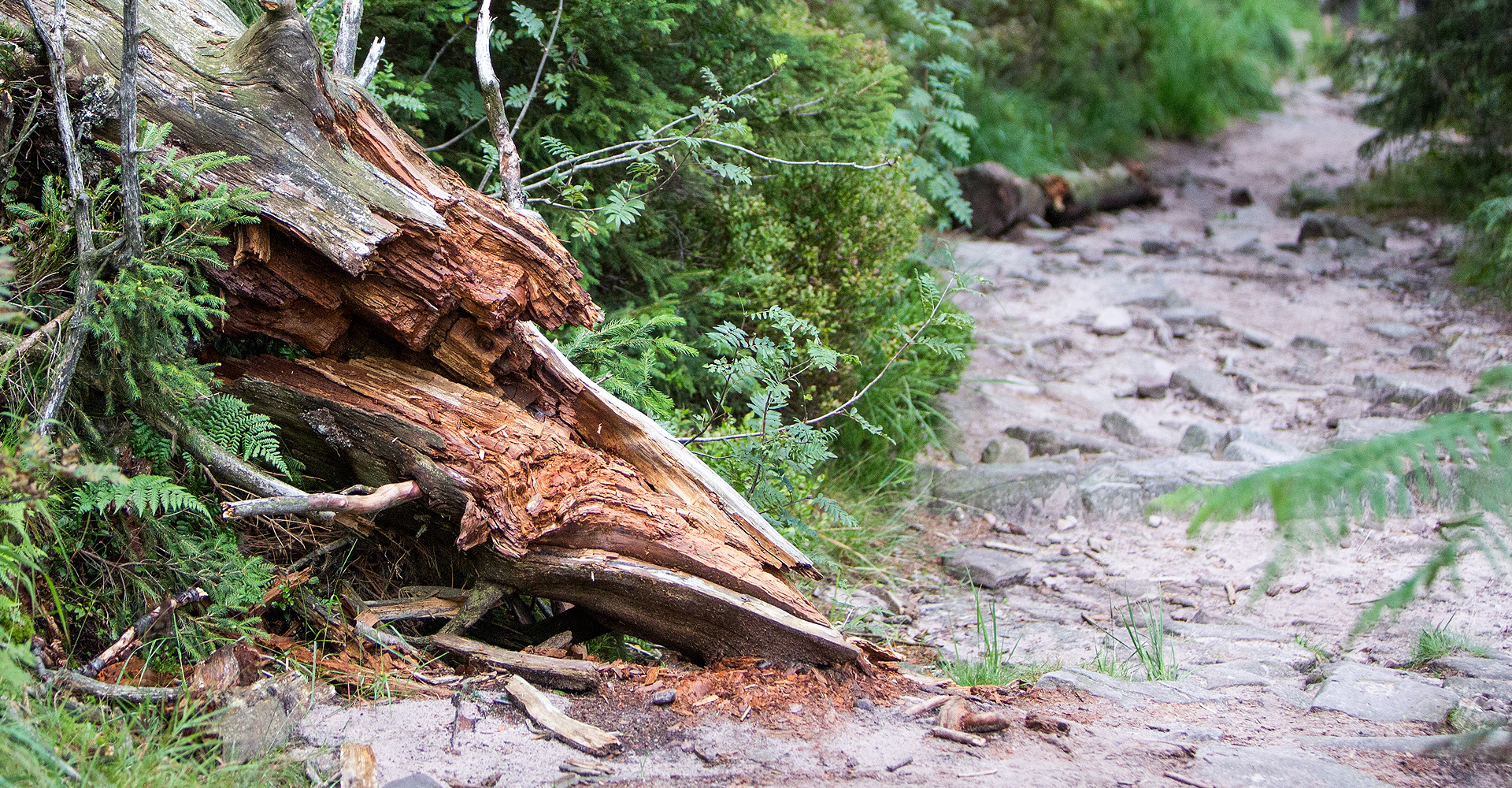Praktische Tipps für nachhaltige Lebensführung. Practical tips for living more sustainably. Manuel de l’écologie pratique
Die Welt im eigenen Maßstab verändern. Changing the world on your scale. Changer le monde à son échelle.
Du willst mithelfen, die Welt umweltfreundlicher zu machen, weißt aber nicht wie? Wo fängst du an? Was hat den größten Effekt? Dann bist du hier genau richtig! Ich bin Elsa, Freiwilligendienstleistende aus Frankreich und will dir hier einfache und praktische Tipps, Infos und Links für eine nachhaltige Lebensführung geben!
You want to help making the world more ecofriendly but you do not know where to begin ? What are the most efficient things to do? Then you are exactly in the right place. I am Elsa, volunteer in the Black Forest national park and I want to give you simple and efficent tips and informations about ecology.
Tu veux participer à la transition écologique mais tu ne sais pas où commencer ? dans ce cas, tu es au bon endroit ! Je suis Elsa, volontaire française dans le parc national de la Forêt Noire en Allemagne. Avec ce projet je veux donner des conseils pratiques et simples à mettre en place.
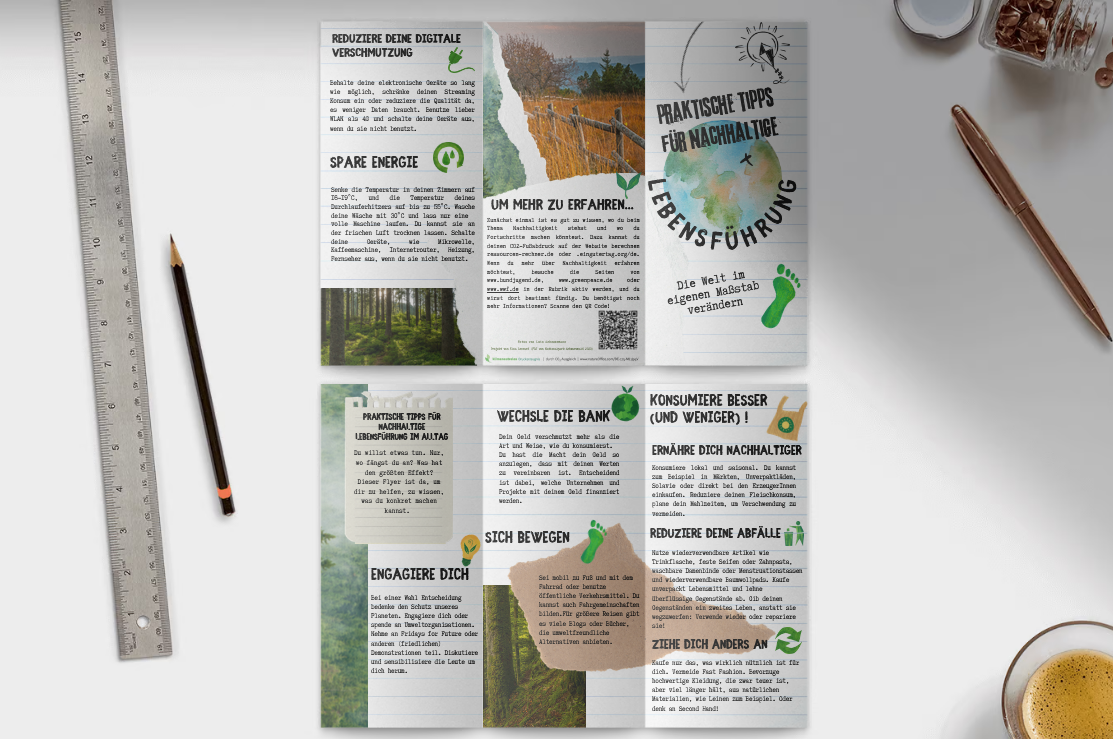
In jedem Abschnitt findest du die Texte zuerst auf Deutsch, dann auf Englisch und zuletzt auf Französisch. In meinem Flyer "Praktische Tipps für nachhaltige Lebensführung " habe ich kurz und knapp einfache Tipps für umweltfreundliches Verhalten im Alltag zusammengestellt. Der Flyer ist auf Deutsch, Französisch und Englisch verfügbar. Los geht's! Viel Spaß beim Lesen und Ausprobieren!
In each section you will find the text first in German, then in English and finally in French. In my flyer "Practical tips for sustainable living in everyday life" I have put together short and simple tips for environmentally friendly behavior in everyday life. The flyer is available in German, French and English. All further information and links can be found here in the article. Here we go, have fun reading and trying it out!
Pour chaque partie, tu trouveras le texte d'abord en allemand, puis en anglais et enfin en français. Dans mon flyer "Petit guide pratique de l'écologie" j'ai compilé des conseils courts et simples pour un comportement respectueux de l'environnement dans la vie quotidienne. Le dépliant est disponible en allemand, français et anglais. C'est parti ! Amuse-toi à lire et à essayer !
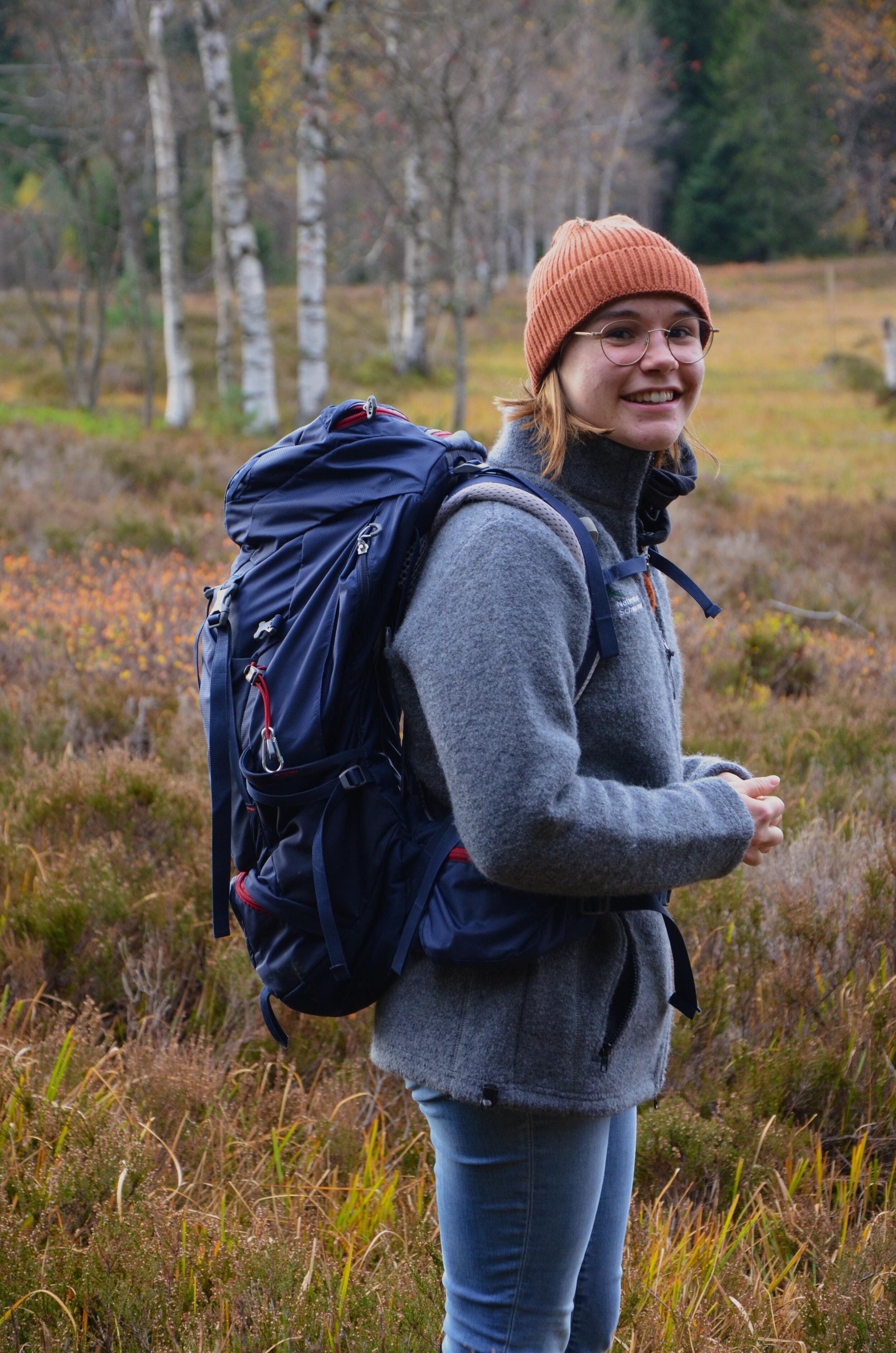
Ein Jahr im Dienst der Umwelt - und ein Projekt, das zu umweltbewusstem Handeln anregt
Hallo zusammen!
Ich bin Elsa, 19 Jahre alt, komme aus Westfrankreich und mache seit September 2022 mein Deutsch-Französisches Ökologisches Jahr im Nationalpark Schwarzwald. Ich arbeite mit Kinder- und Jugendgruppen und leite diese in meinem Team der Natur- und Wildnisbildung dazu an, in die wilderwerdende Natur einzutauchen. Mir ist wichtig, dass die Nationalparkbesucher auch etwas für ihren Alltag mitnehmen. Mit diesem Beitrag will ich dir dabei helfen, herausrauszufinden, wie umweltfreundlich du lebst und dir Anregungen geben, was du vielleicht noch verbessern kannst.
A year volunteering for the environment - and a project that encourages environmentally conscious action
Hello everyone!
I'm Elsa 19 years old, I'm from western France and I fullfilled my German-French Ecological Volunteer Year in the Black Forest National Park since September 2022. I work there with groups of children and young people, guiding them to immerse themselves in the wilderness. It is very important to me that after people discovered the national park they have inspiration and tools to protect the nature from home. That is the idea behind this project. With this article I want to help you find out how environmentally friendly you live and then to give you ideas what you could make better.
Une année de volontariat au service de l'environnement - et un projet qui incite à agir de manière éco-responsable
Bonjour à tous !
Je m'appelle Elsa, 19 ans, je viens de l'ouest de la France et je travaille depuis septembre 2022 dans le cadre du volontariat écologique franco-allemande au Parc national de la Forêt-Noire. Je travaille avec des groupes d'enfants et d'adolescents et les sensibilise avec l'équipe d'éducation pour qu'ils s'immergent dans une nature redevenue sauvage. Il est important pour moi qu'après une visite du parc national, les visiteurs puissent continuer de protéger la nature dans leur vie quotidienne. Avec ces conseils, je veux t'aider à découvrir dans quelle mesure ton mode de vie est respectueux de l'environnement et à te donner ensuite des idées sur ce que tu pourrais peut-être améliorer.
Finde heraus, wo du stehst! Know where you stand! Découvre où tu en es!
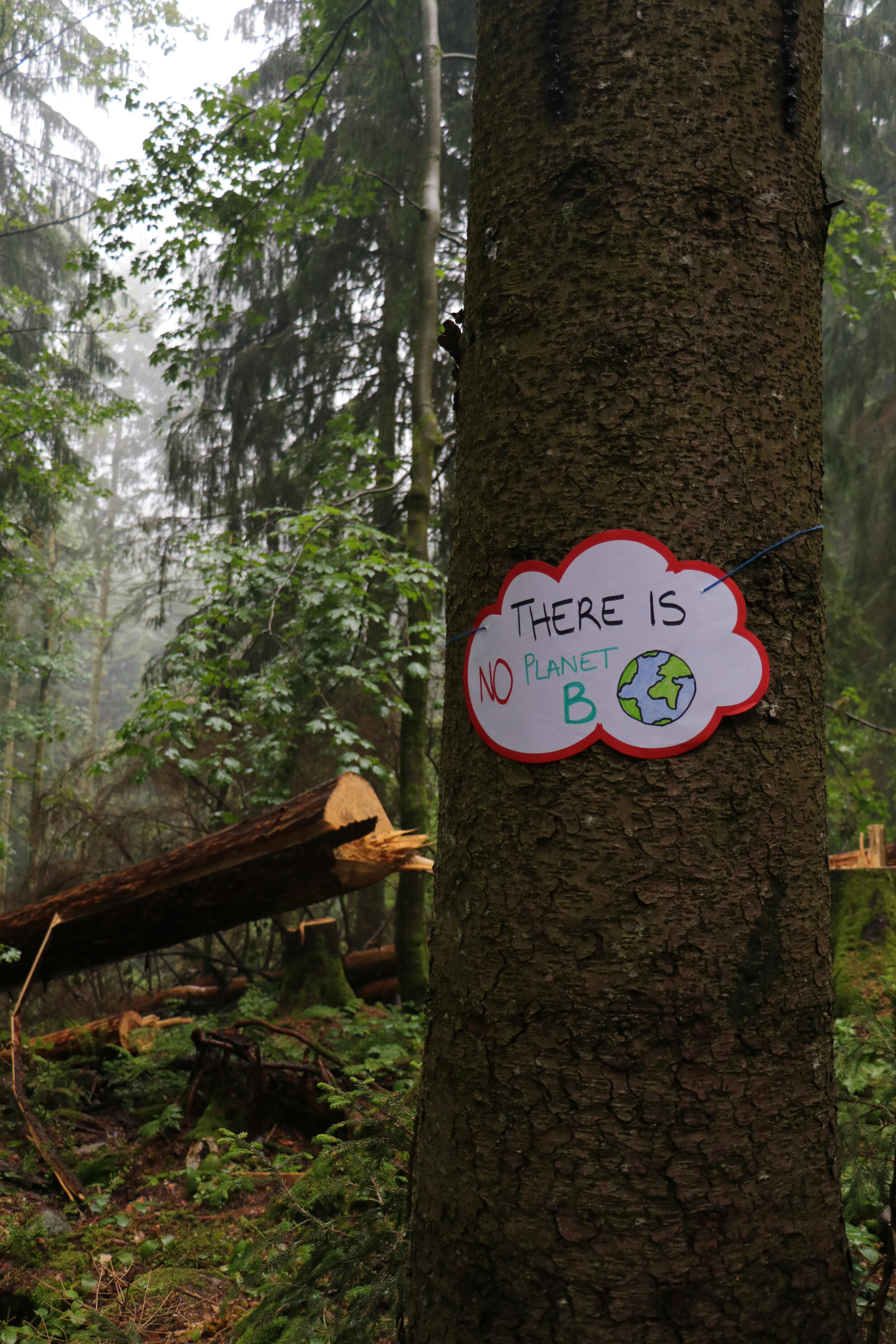
Zuallererst ist es gut zu wissen, wie nachhaltig dein Alltag bereits ist und wo du Fortschritte machen könntest. Dazu kannst du deinen CO2-Fußabdruck berechnen:
To know where you stand and how you can progress,calculate your carbon footprint on the website:
https://www.nature.org/en-us/get-involved/how-to-help/carbon-footprint-calculator/
Je calcule mon empreinte carbone sur le site:
Engagiere Dich! Get involved! S’engager!
Auch wenn dein eigenes Verhalten sehr wichtig ist: es wird alleine leider nicht ausreichen, um nachhaltige Veränderungen möglich zu machen. Dazu brauchen wir unbedingt politische Maßnahmen. Deshalb ist es so wichtig, dass du deinen Wunsch für mehr Nachhaltigkeit klar ausdrückst, zum Beispiel indem du wählen gehst oder an friedlichen Demonstrationen wie Fridays for Future teilnimmst. Auch Nicht-Regierungs-Organisationen (NGOs) leisten einen wichtigen Beitrag, um etwas zu bewegen. Hier kannst du spenden, dich bei ihnen engagieren oder bei ihren Aktionen und Veranstaltungen teilnehmen. Und ein weiterer Punkt für dich: Es ist wichtig, über Nachhaltigkeit zu sprechen! In der Schule, am Arbeitsplatz, in der Familie, unter Freunden, überall.
Eventhough individual action is essential to ecological transition, it will unfortunately not be enough. Climate change may be the biggest social issue currently. This is why the topic must be brought into politics. Not only can it be done by voting, it can also be shown by demonstrating or why not suggest actions to your city ? NGOs also have a huge impact on the subject. They took the lead way before politics did. Because they are independent, they rely on the donations people make. If you cannot or want to do more you can commit to one of them, sign their petitions or simply take part in one of the events they often organize. Finally and most importantly, ecology is a topic that must be discussed, the most that you can. It concerns every single one of us and therefore must be visible everywhere: in school, at work, in family dinners or with your friends. You do not have to convince everyone, you just have to bring up the topic.
Bien que l’action individuelle soit indispensable à la transition écologique, elle n’aura un véritable impact qu’accompagnée d’une action politique. C’est pourquoi l’écologie doit impérativement prendre une place plus importante dans les urnes. Mais voter n’est pas le seul levier, les marches pour le climat ou autres manifestations pacifiques permettent aussi de rendre cette volonté visible aux dirigeants politiques. Outre l’aspect politique, les ONG ont pris depuis longtemps la tête de ce mouvement écologiste: les soutenir, que ce soit par des dons ou un engagement, permet donc aussi de faire la différence. Enfin, l’écologie est un sujet dont il faut parler. À l’école, au travail, en famille, entre amis, il est vital d’en discuter.
Wechsle die Bank! Switch banks! Changer de banque!
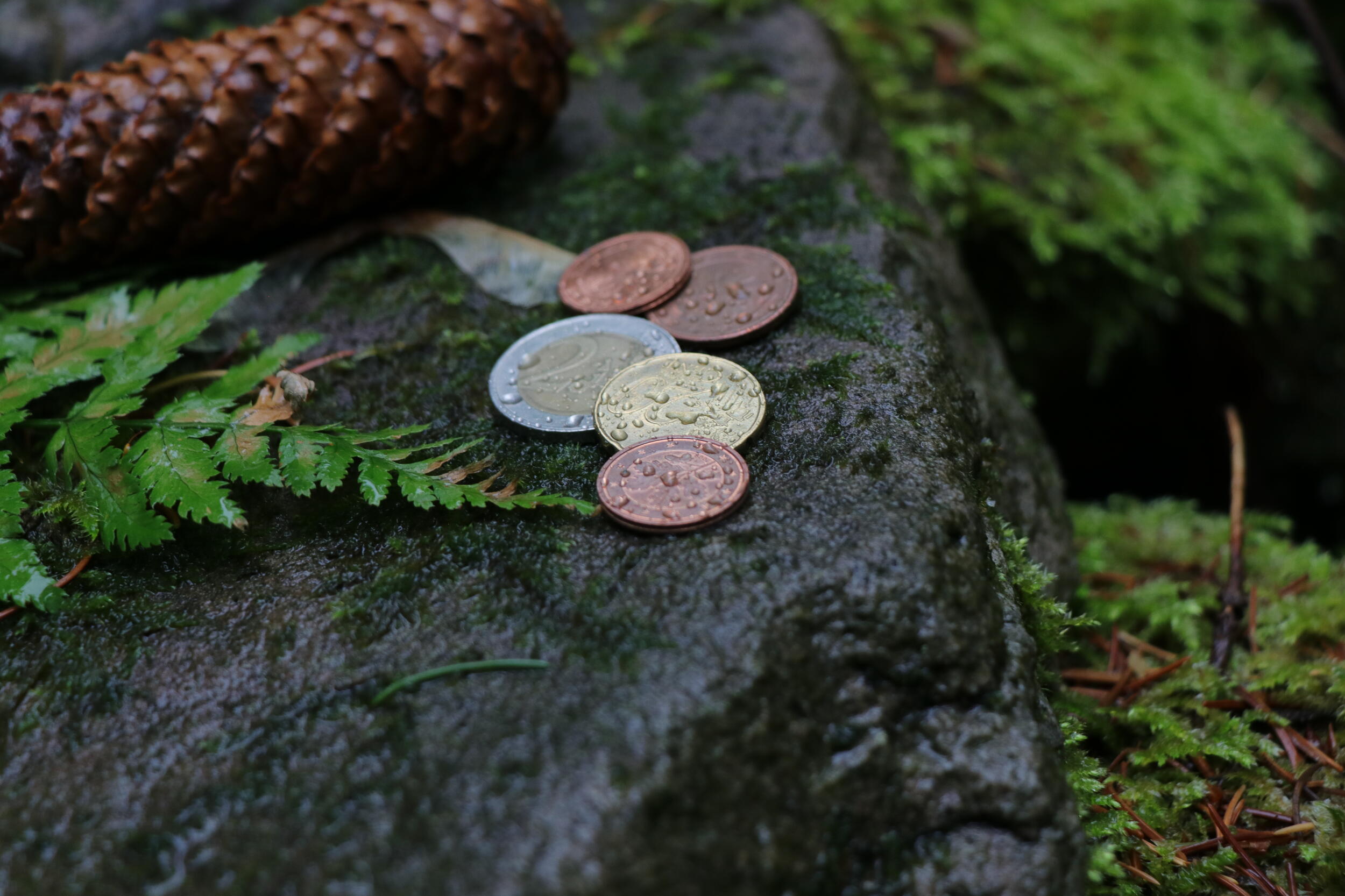
Eine Maßnahme mit großer Wirkung, an die man aber nicht unbedingt denkt, ist der Wechsel deiner Bank. Dein Geld verschmutzt mehr als die Art und Weise, wie du konsumierst. Klassische Banken finanzieren fossile Energien, anstatt sich am ökologischen Übergang zu beteiligen. Es liegt an dir, dein Geld so anzulegen, dass es für deine Werte wirken kann. Entscheidend ist dabei, welche Unternehmen und Projekte mit ihrem Geld finanziert werden. Diese Links geben dir weitere Informationen:
https://www.attac.de/kampagnen/bankwechsel/bank-wechseln/alternativbanken
It may sound surprising at first and yet, it is probably one of the most efficient actions you can do. Did you know that your money pollutes way more than the way you live (consume) ? Most of the banks finance fossil fuels instead of taking part in the ecological transition. You have the power to change that easily by putting your money in the right place so it finances your own interests.
Cela peut sembler étrange au premier abord, en quoi changer de banque pourrait bien aider à combattre la crise climatique ? Et pourtant, c’est probablement une des actions ayant le plus fort impact. Selon un rapport de l’Oxfam France, notre argent pollue plus que la façon dont nous consommons. Les banques classiques financent les énergies fossiles plutôt que de participer à la transition écologique, il est possible de changer les choses en plaçant simplement son argent différemment. Voici quelques articles traitant du sujet :
https://finance-heros.fr/banques-vertes-ethiques-responsables/
Bewege dich! Move around! Se déplacer!
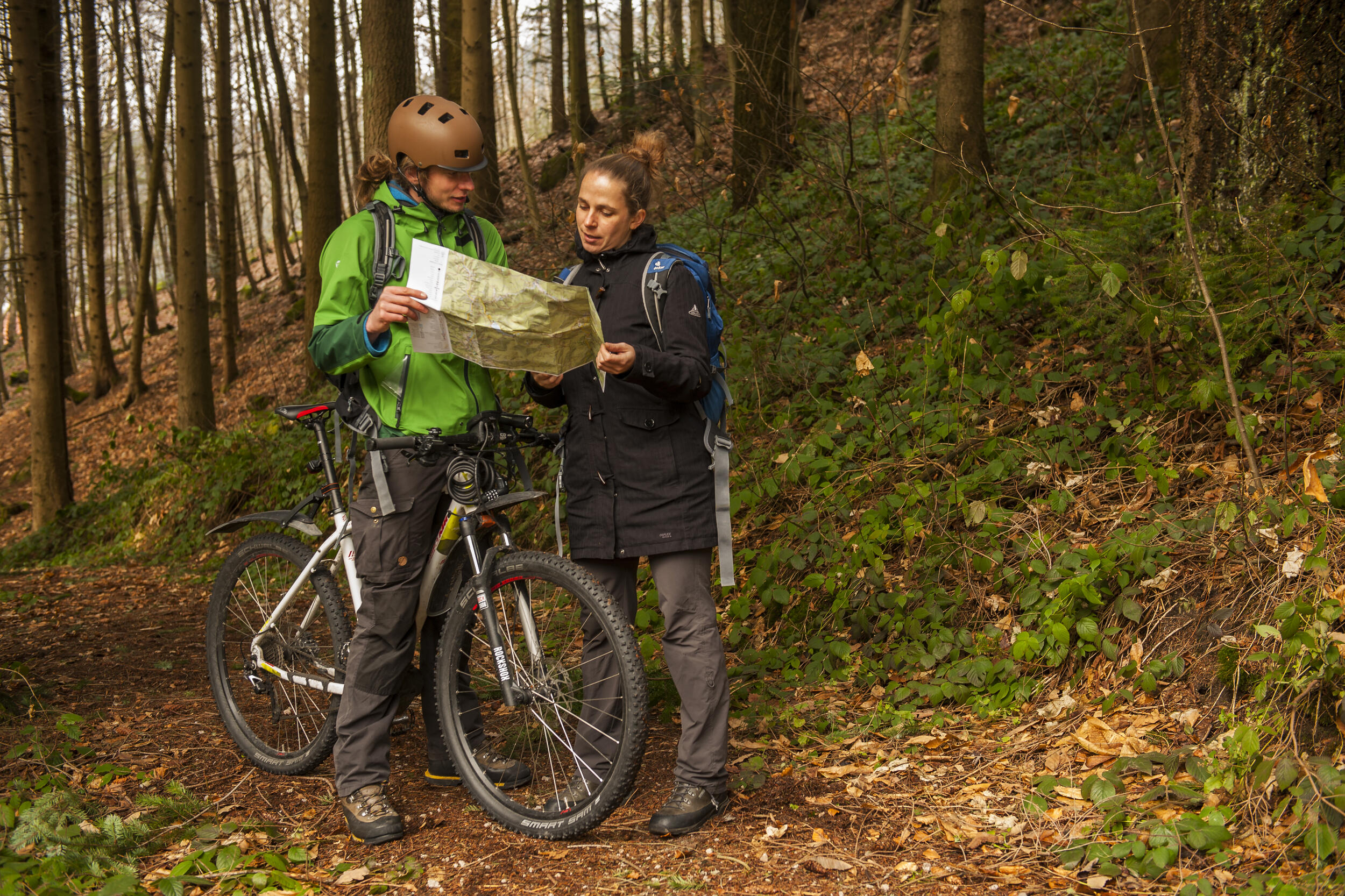
Wie wir uns bewegen, macht einen riesen Unterschied für den Klimawandel. Wie kannst du deinen CO2-Fußabdruck in diesem Bereich reduzieren? Du kannst ja nicht einfach aufhören, dich zu bewegen?! Für deine Alltagstrecken, bewege dich am besten zu Fuß oder mit dem Fahrrad. Benutze in der Stadt öffentliche Verkehrsmittel. Diese sind meist genauso schnell oder langsam wie die Fahrt mit dem Auto, aber sie verschmutzen die Umwelt deutlich weniger. Und wenn man auf dem Land lebt? Für ländliche Gegenden ist das Auto manchmal die einzige Option, um den Alltag zu bestreiten. Trotzdem kannst du deinen CO2-Fußabruck reduzieren. Du kannst deine Fahrten kombinieren: gehe zum Beispiel auf dem Rückweg vom Arbeiten direkt einkaufen. Bilde mehr Fahrgemeinschaften: je voller das Auto ist, desto besser. Nutze für längere Strecken Züge oder Fernbusse. Wenn es irgendwie geht, vermeide es zu fliegen. Es gibt viele unglaublich schöne Urlaubsziele, die mit dem Zug oder Bus erreichbar sind! Und falls du unbedingt fliegen musst, versuche seltener aber dafür länger zu reisen.
https://www.wwf.de/aktiv-werden/tipps-fuer-den-alltag/energie-spartipps/nachhaltig-mobil
https://www.backpackertrail.de/backpacking-tipps/umweltfreundliche-transportmittel/
The way you move around does have a huge impact on climate change. It represents a big part of your carbon footprint. So how can you reduce it ? People cannot just stop moving around. For everyday journeys, getting around on foot or bike are the best options. In the city, you can also use public transport. Most of the time it does not take longer no longer than the car and pollutes less. But what about what we can do when we live in the countryside ? In some cases, the car is just the only option. You cannot walk 20 km to buy groceries. Do not worry though, there are still ways to reduce your carbon footprint. Try to make your journeys more efficient: buy your groceries on your way back from work, do car sharing carsharing to bring kids to school or with colleagues. The more filled the car is, the better. For longer trips, the better option is the train. The network of long-distance buses is becoming more and more complete. It can be a good alternative too, and besides, it is still pretty cheap! But please avoid taking the plane as much as you can. There are plenty of incredible destinations reachable with the previous options. And if you ever really really need to go on a plane, then, try to use it as rarely as you can but maybe a bit longer to make it more profitable.
La façon dont on se déplace a un impact considérable sur le changement climatique. Alors comment réduire notre empreinte ? On ne peut pas simplement arrêter de se déplacer. Pour les trajets du quotidien, la marche à pied et le vélo sont les options les plus “propres”. En ville, on peut aussi utiliser les transports en commun. Souvent, ce n’est pas plus long que de prendre la voiture et cela pollue considérablement moins. Mais comment faire quand on vit à la campagne? Dans des zones plus isolées, la voiture est parfois la seule option. Il est tout de même possible de réduire son empreinte carbone en “rentabilisant” ses trajets: en les regroupant, en intégrant les courses à un des trajets hebdomadaires par exemple, ou en faisant du covoiturage pour aller au travail ou emmener les enfants à l’école. En effet, plus la voiture est remplie, plus ses rejets carbonés seront “rentables”. Pour les trajets longs, le moyen de transport le plus propre reste le train. Les lignes de bus grandes distances se développent aussi de plus en plus, cela peut être une option intéressante pour les petits budgets. Au maximum, il faut éviter l’avion. Pas besoin de partir à l’autre bout du monde pour être dépaysé! Cependant, il arrive que l’avion soit la seule option. Dans ce cas, on part plus longtemps mais surtout moins souvent, toujours dans cette idée de “rentabiliser” ses trajets. À noter que l’avion n’est pas un moyen de déplacement normal et ne doit pas être utilisé comme tel.
https://www.greenpeace.fr/quel-moyen-de-transport-ecologique-adopter/
Ernähre dich nachhaltiger! Eat better! Mieux s’alimenter!
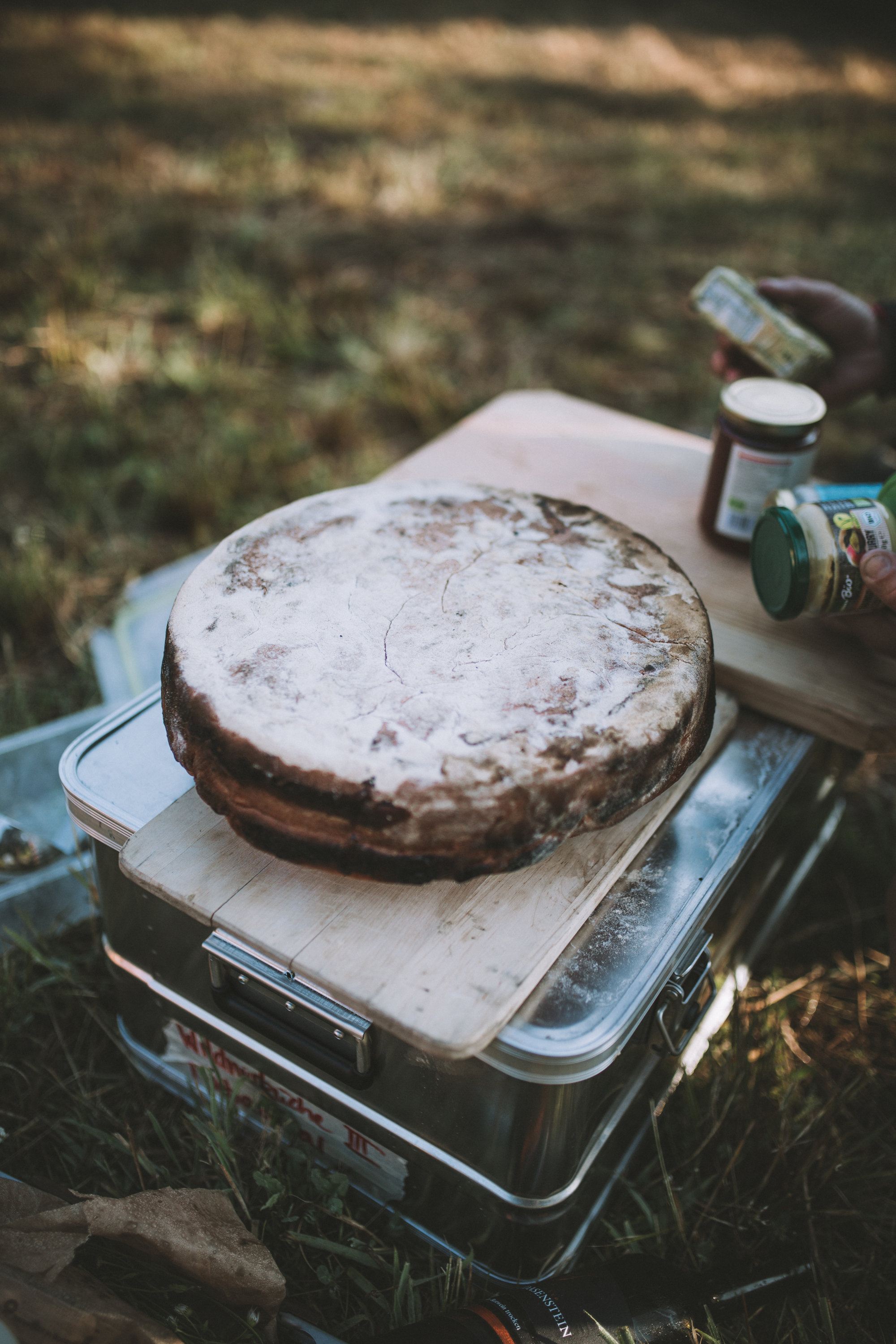
Du musst nicht vegetarisch oder vegan leben, um den Planeten zu retten. Was du aber tun solltest, ist deinen Fleischkonsum zu reduzieren. Kaufe außerdem am besten saisonal und am besten noch lokal ein (ja es tut mir auch leid, dass es keine Gurke zu Weihnachten gibt). Schaue außerdem, dass deine Lebensmittel möglichst unverpackt sind. Um wenige Lebensmittel zu verschwenden, plane deine Mahlzeiten und kaufe nur das, was du wirklich brauchst.
https://www.bundjugend.de/tipps-methoden-und-aktionen-zum-thema-ernaehrung-und-landwirtschaft/
https://www.wwf.de/aktiv-werden/tipps-fuer-den-alltag/tipps-fuer-ernaehrung-und-einkauf
It is not essential to become vegetarian or vegan to help the climate, though it is useful to reduce your meat consumption. Eat seasonally (sorry for your sudden need of tomato salad in December) and mostly local if you can. Finally, to avoid waste: try to plan your meals for the week before running errands, so you only buy what you really need, and avoid packaging.
https://www.wwf.org.uk/betterbasket
https://www.eufic.org/en/food-production/article/practical-tips-for-a-healthy-and-sustainable-diet
Il n’est pas indispensable de devenir vegan ou végétarien pour sauver la planète, en revanche, il est utile de diminuer sa consommation de viande. Il est aussi important de consommer de saison,(désolé on ne mange pas de tomates en décembre) et quand on le peut, local. Enfin pour éviter le gaspillage, on évite les emballages du mieux qu’on peut, surtout ceux en plastique et on planifie ses repas pour n’acheter que ce dont on a besoin.
https://www.greenpeace.fr/agir/chaque-geste-compte/alimentation/
https://www.mangerbouger.fr/manger-mieux/bien-manger-sans-se-ruiner/calendrier-de-saison
Reduziere deine Abfälle! Zero waste approach. Réduire ses déchets!
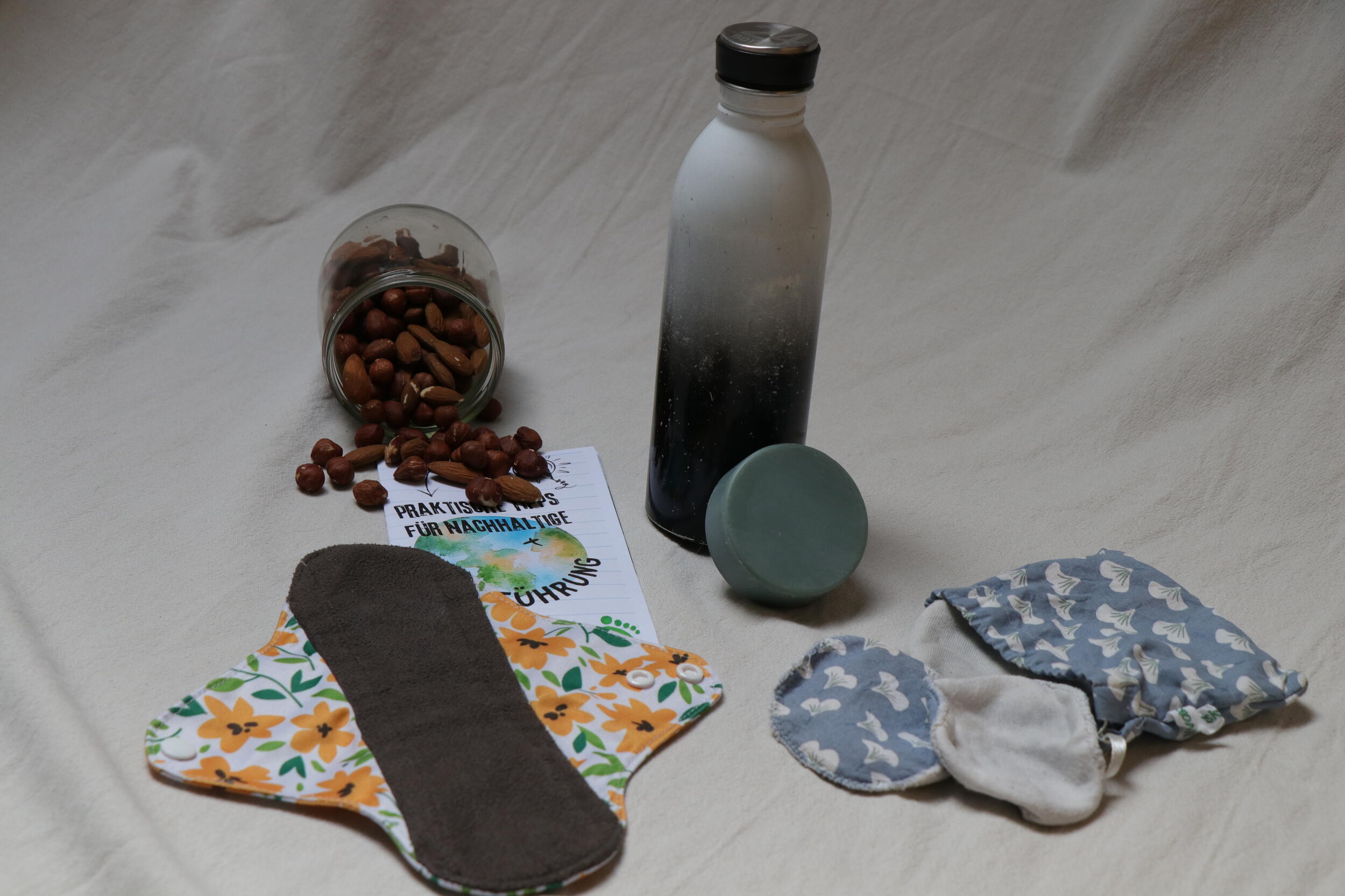
Etwa 37 Millionen Tonnen Müll fallen jährlich in deutschen Haushalten an, 450 Kilogramm pro Einwohner und Jahr (Quelle: BUND). Damit du dir die Abfallmenge besser vorstellen kannst, hier ein Vergleich: Ein schwerer Lkw mit Anhänger darf in Deutschland bis zu 40 Tonnen transportieren und misst maximal 18,75 Meter. Würde man den deutschen "Müllberg" auf Lastzüge verteilen, bräuchte man 950.000 Lkws! Deshalb ist der "grüne Wandel” eine rießige Herausforderung. Um die Auswirkungen unserer Abfälle zu reduzieren, ist es das Beste einfach, weniger zu produzieren. Was du dafür tun kannst: Kaufe auf dem Wochenmarkt oder in Unverpacktläden ein, um unnötige Verpackungen zu vermeiden oder bringe wiederverwendbare Taschen mit, wenn du zum Beispiel Brot einkaufen gehst. Du kannst auch wiederwendbare Versionen von Produkten benutzen, wie Trinkflasche, waschbare Baumwollpads und Damenbinde oder Menstruationstassen. Wichtig ist: lehne überflüssige Gegenstände ab (zum Beeispiel Werbung, kleine Geschenke wie Schlüsselanhänger, Stifte usw.) und versuche kaputte Dinge zuerst zu reparieren, anstatt direkt neue zu kaufen.
https://zerowastegermany.de/was-ist-zero-waste/
https://www.bewusstgruen.de/lexikon/zero-waste/
https://www.boell.de/de/2019/06/06/zero-waste-es-geht-auch-ohne
https://www.isbn.de/buch/9783788622428/wie-viel-regenwald-passt-auf-dieses-brot
EPA estimated that each year, U.S. food loss and waste embodies 170 million metric tons of carbon dioxide equivalent, greenhouse gas emissions, which is equal to the annual CO2 emissions of 42 coal-fired power plants. The topic is huge. It is one of the biggest challenge for ecological transition. The best way to reduce the effects of our wastes is simply to produce less of them. In order to do so, buy bulk products to avoid unnecessary packaging, prefer the reusable version of items like reusable sanitary pads or menstrual cup, cotton pads, reusable containers and water bottles. Refuse unnecessary items like goodies, publicity… and repair the ones you already have instead of buying new ones.
https://www.greenpeace.org/international/campaign/toolkit-plastic-free-future/
Selon Réseau action climat France, la combustion des déchets dans les incinérateurs rejette l’équivalent en CO2 de 2,3 millions de voitures chaque année. Leur mise en décharge représente à elle seule 16 % des émissions de méthane en France, un gaz 25 fois plus réchauffant que le CO2. C’est donc un défi majeur de la transition écologique. Et le mieux pour réduire l’empreinte de nos déchets c’est tout simplement d’en produire moins. Pour cela, on peut acheter en vrac pour éviter les emballages inutiles, utiliser des versions réutilisables de nos produits jetables (protections hygiéniques, cotons démaquillants, gourde…), refuser les objets dont on n’a pas besoin (publicités, porte-clés ou stylos en cadeaux, échantillons…), et surtout réparer ceux qu’on a déjà plutôt que d’en racheter.
https://www.zerowastefrance.org/passer-a-laction/adopter-zero-dechet/
https://www.greenpeace.fr/zero-dechet-13-astuces-tres-simples/
Ziehe dich anders an! Dress differently! S’habiller autrement!
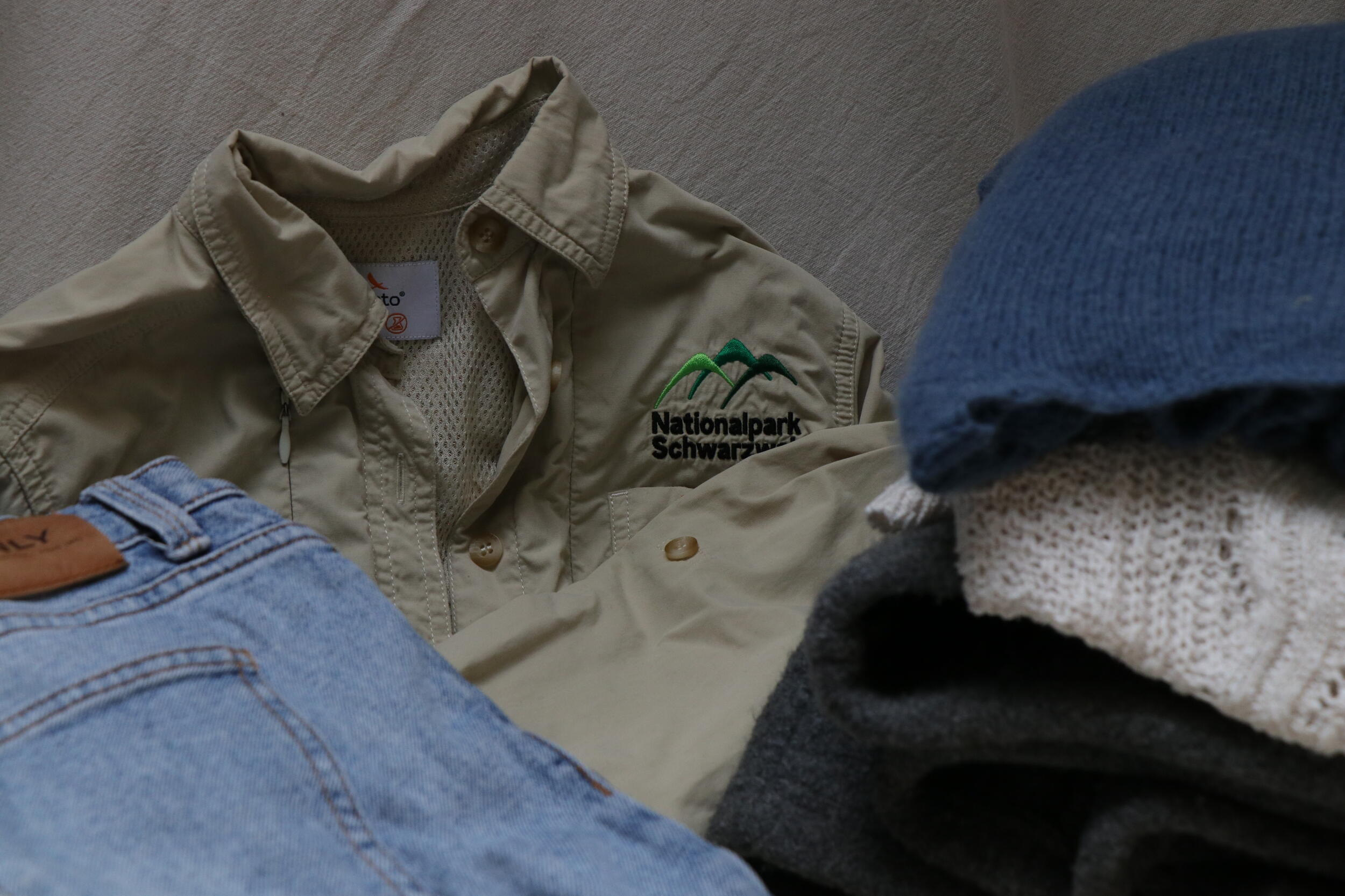
Kleidung herzustellen ist eine dreckige Angelegenheit und erfordert eine enorme Menge an Wasser. Deshalb ist es wichtig, nicht übermäßig zu konsumieren. Also, bevor du ein neues Kleidungsstück kaufst, gibt es ein paar Fragen, die du dir stellen kannst: Brauchst du es wirklich? Besitzt du schon etwas Ähnliches? Oder kannst du es vielleicht leihen? Wirst du dieses Kleidungsstück mehr als ein Jahr tragen? Kannst du es Second-hand kaufen? Wenn nicht, bist du dir sicher, dass dein Neukauf hochwertig und resistent ist? Kaufe besser ein 30€ T-Shirt als eines, das nur 5€ kostet, das du aber jedes Jahr wieder neu kaufen musst, weil es nach 10 Wäschen kaputt geht.
https://www.greenpeace.de/engagieren/nachhaltiger-leben/shein
https://www.greenpeace.de/engagieren/nachhaltiger-leben/10-konsum-tipps
https://www.greenpeace.de/engagieren/nachhaltiger-leben/nachhaltigkeit-kleiderschrank
Since producing clothes is very polluting and requires a lot of water: overconsumption must absolutely be avoided. That is why you need to ask yourself a few questions before buying something new: Do I truly need it? Will I wear it for more than a year? Do I already possess something similar or can I borrow one? Can I buy it second hand? If not, is it quality clothing that will stand the test of time? Better buy a 30€ T-shirt once than a 5€ one that you will need to buy again after 10 washes.
https://www.thegreenedition.com/dress-more-ethically/
https://www.earthday.org/toolkit-how-to-shop-for-your-clothes/
Surtout, il faut éviter de surconsommer. Fabriquer des vêtements est incroyablement polluant et gourmand en eau. Alors avant d‘acheter, il y a quelques questions à se poser: En ai-je vraiment besoin? Ai-je une pièce similaire ou puis-je en emprunter une? Vais-je le porter plus d’un an? Puis-je l’acheter d’occasion? Si non, est-ce un vêtement résistant, de qualité? Mieux vaut acheter une fois un T-shirt de qualité à 30€ qu’un à 5€ qu’il faudra remplacer après 10 lavages.
https://www.greenpeace.fr/comment-opter-pour-une-mode-plus-ethique-et-responsable/
Reduziere deine digitale Verschmutzung! Reduce your digital footprint! Réduire sa pollution numérique
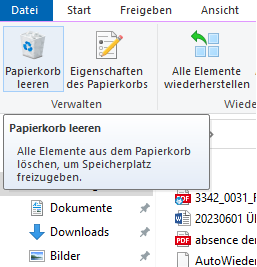
So überraschend es auch klingt: das Internet stößt tatsächlich mehr CO2 aus als der Flugverkehr. Die meisten Leute denken, dass eine E-Mail “grüner” ist als gedrucktes Papier. Das ergibt doch Sinn, oder? Der Laptop und das Internet brauchen kein extra Papier oder Tinte, also logischerweise weniger CO2 Emission?! Das stimmt so leider nicht. Die digitalisierte Welt macht die Verschmutzung einfach weniger sichtbar. Nur weil man nichts in seinen Händen hält, heißt das nicht, dass es keine Wirkungen hat. So kannst du deinen Online-Fußabdruck reduzieren:
- Behalte deine Geräte so lang wie möglich. Die Herstellung von elektronischen Geräte ist sehr umweltverschmutzend. Deshalb repariere sie, wenn es möglich ist. Sonst recycle sie. Du kannst dein nächstes Gerät vielleicht auch gebraucht kaufen.
- Schränke deinen Streaming-Konsum ein oder stelle die Qualität niedriger (zwischen 240p und 720p reichen auf den meisten Bildschirmen).
- Benutze WLAN statt 4G. 4G verbraucht bei der gleichen Datenmenge 23-mal mehr Energie als WLAN.
- Schalte deine Geräte in der Nacht aus oder wenn du nicht zuhause bist. Auch auf Standby Modus haben Geräte noch circa 11 % ihres Energieverbrauchs, den sie unter Last brauchen.
- Schließe die Tabs in deinem Browser, die du nicht brauchst. Speichere Seiten, die du häufig benutzt in deinen Lesezeichen. Das reduziert deine Zeit im Browser.
- Räume deine digitalen Geräte auf: sortiere regelmäßig deine Emails, Apps und Dateien und lösche die, die du nicht brauchst.
https://www.firstlife.de/digitale-verschmutzung-so-schadet-das-internet-dem-klima/
Like a lot of people, you may think that a digital version of a document is more ecological, meaning it releases less CO2. It should make sense because you do not have to print it, no extra paper or ink used, right? However, it is not entirely true. The digital area just makes pollution less visible. Because holding delete nothing in your hands does not mean that there are no consequences. Quite the opposite. Did you know that the Internet releases more CO2 than air traffic? Thus, here are some tips to reduce your online carbon footprint:
- keep your equipment as long as possible because producing those is also extremely polluting. As much as you can, repair them or if you cannot recycle them. When you need to buy another, prefer a reconditioned second-hand phone, besides it is cheaper!
- restrict your streaming consumption and the quality of your video: it will make a huge difference. (between 240p and 720p should do on most of your devices)
- prefer WI-FI to 4G network because the last one consumes 23 more energy than the first!
- turn off your router and every other electronic device at night or when you are not at home. They represent indeed about 11% of your energy expenditure even on standby!
- close the unused tabs on your browser and put the ones you often use as favorites or shortcuts.
- clean regularly your devices, meaning delete your emails, unused files and apps.
https://green-hero.info/en/digital-pollution/
https://www.unicef.org/armenia/en/stories/five-tips-reducing-your-digital-footprint
On pense souvent qu'envoyer un mail est plus "écolo" que d'envoyer un courrier papier, sous-entendu que cela émettrait moins de carbone puisque c'est dématérialisé. Mais ce n'est pas tout à fait vrai. En effet, environ 2,5 % de l’empreinte carbone de la France est due au domaine du numérique. Internet rejette même plus de CO2 que le traffic aérien. Alors voici quelques astuces simples pour réduire son impact sur le net :
- garder son équipement le plus longtemps possible car la production est extrêmement polluante donc, les faire réparer quand c’est possible ou les recycler quand il n’y a pas d’autre option, les acheter d’occasion reconditionnés, et en plus cela coûte moins cher !
- limiter le streaming ou au moins la qualité des vidéos (Sur un écran d’ordinateur ce n’est pas nécessaire de regarder en HD, 720p devraient suffire ou 240p sur votre téléphone.) ;
- privilégier le wifi à la 4G car cette dernière consomme 23 fois plus d’énergie
- éteindre la box internet et tous les appareils électroniques la nuit ou quand on s’absente car les appareils en veille représentent environ 11% de votre facture d'énergie ;
- fermer les onglets inutilisés du navigateur et mettre en favoris ou en raccourcis ceux utilisés régulièrement pour éviter de solliciter le moteur de recherche inutilement ;
- nettoyer les ordinateurs et téléphones régulièrement, c'est-à-dire: supprimer ses mails et fichiers non utilisés, faire le tri.
https://infos.ademe.fr/magazine-avril-2022/faits-et-chiffres/numerique-quel-impact-environnemental/
Spare Energie! Save Energy! Économiser l’énergie!
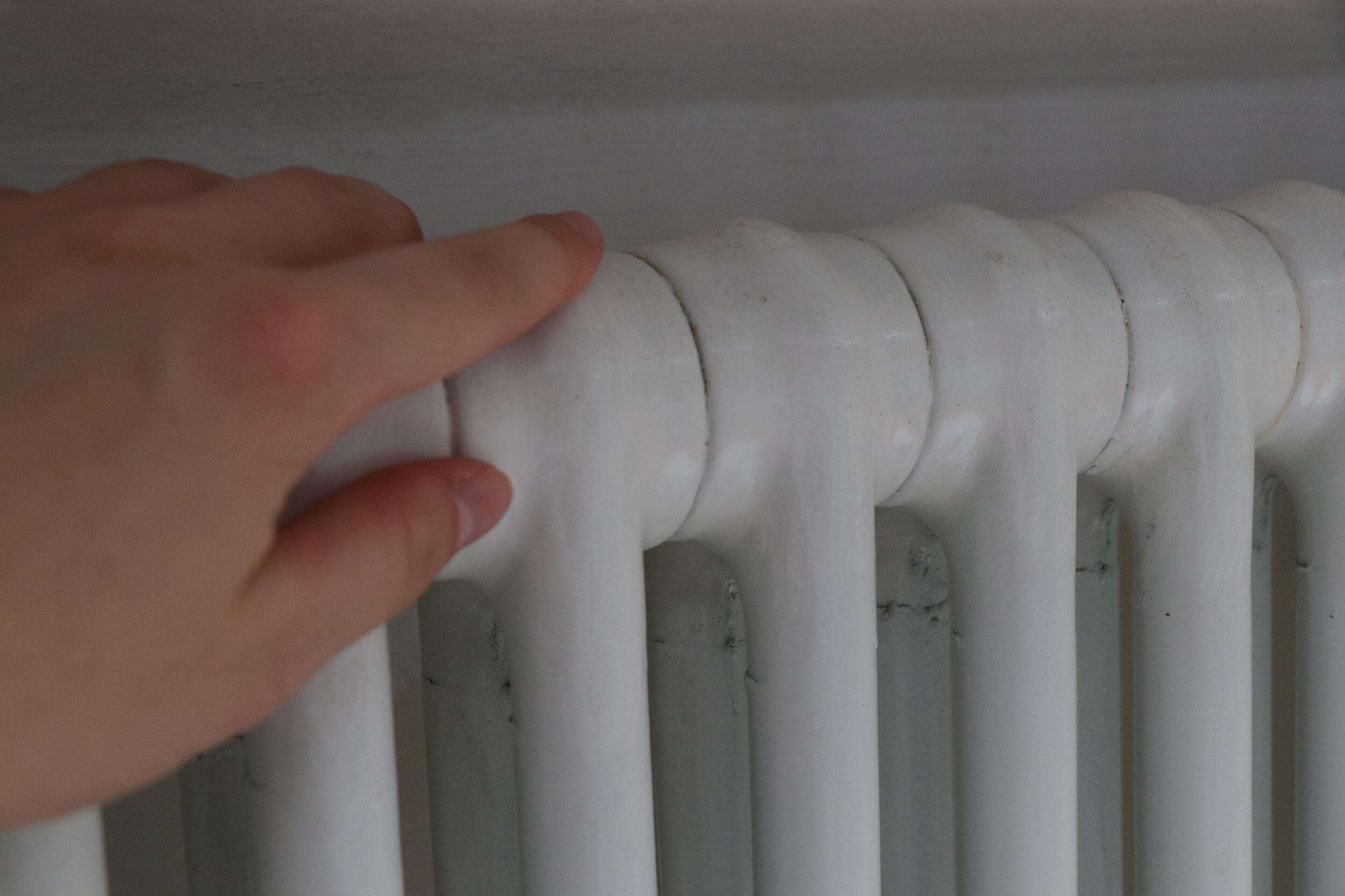
Du kannst deinen CO2-Fußabdruck und deine Heizkostenrechnung einfach reduzieren. Heizen macht rund 70 % des Energieverbrauchs eines Haushalts aus. Hier kannst du schnell Erfolge erzielen. Senke dazu die Temperatur deiner Wohnung auf 16 bis 19°C. Die Heizkörper können auf Frostschutz gestellt werden, wenn du mehr als einen Tag abwesend bist. Du kannst auch die Temperatur deines Durchlauferhitzers auf 55°C senken, das reicht für eine normale Benutzung. Versuche so gut wie möglich Wärme (oder Kühle im Sommer) in der Wohnung zu behalten. Schließe dazu Fensterläden und Vorhänge in der Nacht oder während des Tages im Sommer. Wenn möglich lasse deine Isolierung überprüfen. Geräte wie Fernseher, Internet Router oder Wasserkocher kannst du an eine Mehrfachsteckdose hängen, die du am Abend ausschaltest. Wasche deine Wäsche bei niedriger Temperatur (30°C) und schalte Waschmaschine und Geschirrspüler nur ein, wenn sie voll sind. Benutze am besten keinen Trockner, sondern lasse deine Wäsche an der frischen Luft trocknen.
https://www.co2online.de/service/energiesparapp/#c88343
https://www.wwf.de/aktiv-werden/tipps-fuer-den-alltag/energie-sparen-und-ressourcen-schonen
To reduce your carbon footprint and your bill there are a few things you can do.The most efficient action is to lower the heating temperature. It represents indeed about 70% of your energy consumption. 19°C or until 16°C in the bedrooms is what is recommended (and it is better for your health). Put your radiators on frost protection mode when you are gone more than a day.
As much as you can, keep the warmth (or the coolness) inside: close the shutters and curtains at night (or during the day in the summer), use a door bottom and have your insulation checked. The devices are plugged on a multi-socket that you turn off at night (television, router, coffee machine, kettle, laptop…). you can put the temperature of your water heater to 55°C it is largely enough for a normal use. As for the laundry, wash it at a lower temperature (30°C) or in “Eco” mode. Always let the washing machine and dishwasher full load running. Let the laundry dry in the open air instead of using the dryer.
Pour réduire son empreinte carbone et sa facture, il existe plusieurs gestes simples. Le plus efficace est de baisser le chauffage puisque cela représente environ 70% de la consommation d’énergie d’un ménage. 19°C dans les pièces à vivre et 16°C dans les chambres, c’est suffisant. Les radiateurs peuvent être mis en mode hors-gel lorsqu’on s’absente plus d’une journée.
Du mieux qu’on peut, on garde la chaleur à l’intérieur (ou la fraîcheur) en fermant les volets et les rideaux la nuit et en installant un bas-de-porte par exemple et si possible on fait vérifier son isolation. Les appareils sont branchés sur des multiprises que l’on éteint le soir (télévision, cafetière, bouilloire, ordinateur, box internet etc…). Régler la température du chauffe-eau sur 55°C suffit amplement pour une utilisation normale. Pour le linge, on le lave à 30°C ou en mode “Eco” et on remplit toujours le lave-linge ou lave-vaisselle pour ne pas les faire tourner inutilement. On laisse sécher ses vêtements à l’air libre plutôt qu’au sèche-linge.
https://www.youtube.com/watch?v=E331tTmy0Hw https://www.greenpeace.fr/guide-economies-energie/
Trage etwas zum Erhalt der Artenvielfalt bei! Protect the biodiversity! Préserver la biodiversité
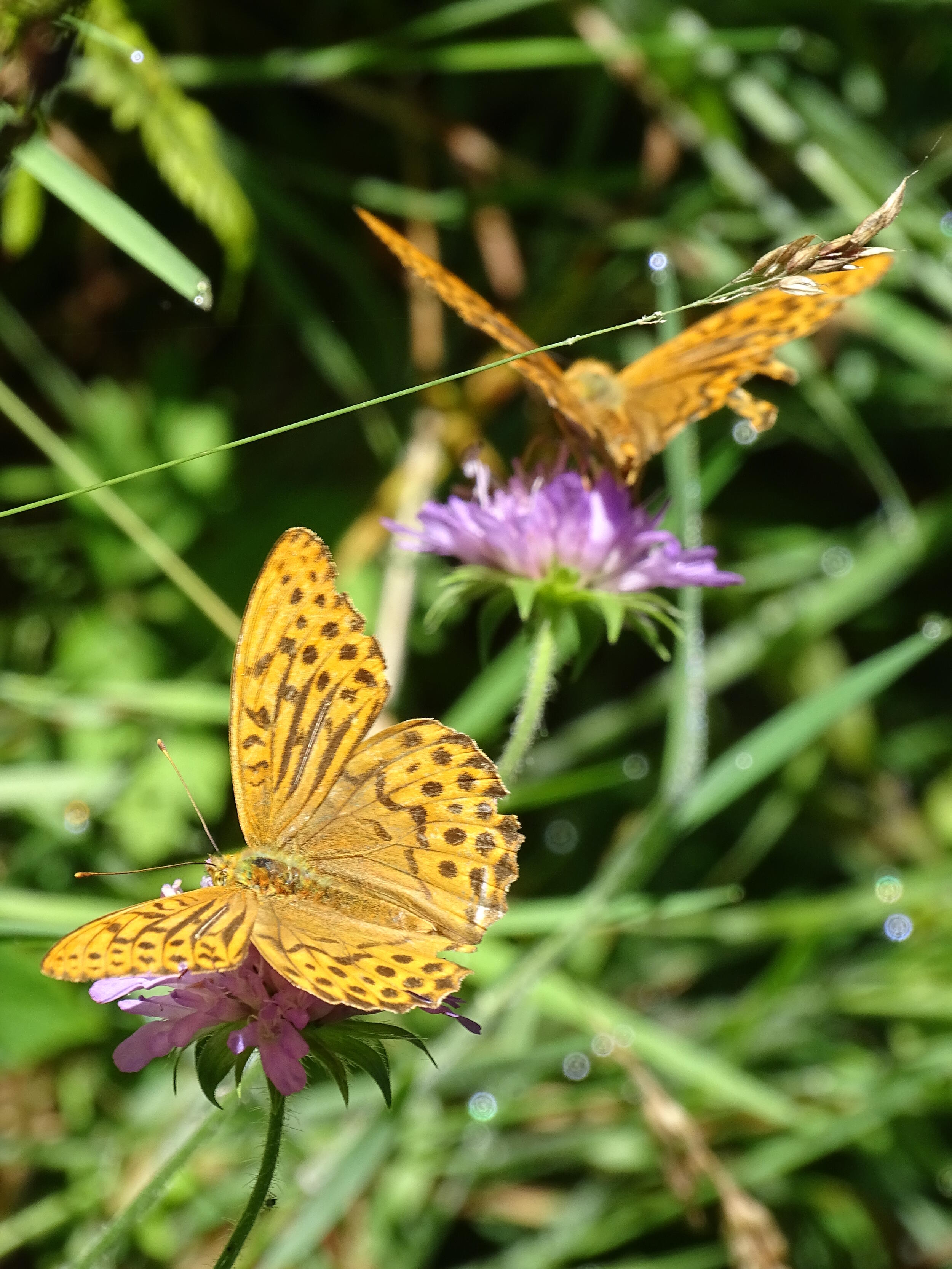
Die Klimakrise geht leider Hand in Hand mit einer Biodiversitätskrise. Auch da kannst du handeln! Du kannst Vereine oder NGOs finanziell unterstützen, aber nicht nur das: du kannst Biodiversität in deinem Maßstab schützen. Dafür musst du nicht mehrere Hektar Land besitzen. Auch in einem kleinen Garten kannst du einfach Dinge beachten: mähe nicht die ganze Zeit der Wachstumsperiode und vor allem nicht überall! Mähe nur kleine Stellen und Pfade. So profitiert sowohl die Natur als auch du vom Garten. Auch ohne Garten kannst du Platz für Natur schaffen. Auf deinem Balkon oder deine Fensterbank kannst du Pflanzen und Blumen pflanzen, die Bestäuber anlocken. In vielen Gemeinden kannst du dich auch im Urban Gardening, als Grünflächen-, Blühinsel oder Baumpate engagieren.
Unfortunately, climate change also goes together with a biodiversity crisis. To help it slow down, you can of course support NGOs or associations but not only. On their own scale, everyone can create biodiversity shelters. If you have a garden, try differentiated grass cutting, meaning you do not mow all the time and above all not everywhere. It will allow wild flowers to come back to your garden and attract insects. In order to do that, just mow the areas you want to use and small pads in-between, doing so, both you and nature can benefit from it.
Yet how does it go when you do not have a garden? No problem. A balcony or a window sill are enough to plant some flowers that will attract pollinators. It may also be a good opportunity to suggest your city to create shared gardens and “biodiversity islands”.
https://www.wildlifetrusts.org/actions/best-plants-bees-and-pollinators
https://www.youtube.com/watch?v=2wtktAjeLB4&t=3s
https://www.saferbrand.com/articles/top-plants-that-attract-pollinators
https://www.dogwoodalliance.org/2023/02/how-to-increase-biodiversity-in-your-backyard-and-garden/
La crise climatique va malheureusement de pair avec une crise de la biodiversité. Pour aider à la ralentir, on peut évidemment soutenir des associations ou ONG dont c’est le combat, mais pas seulement. À son échelle, chacun peut aussi créer des abris pour la biodiversité. Pour cela, pas besoin d’avoir plusieurs hectares de terrain. Avec un jardin, on adopte la tonte différenciée, cela signifie qu’on ne tond pas tout le temps et surtout pas partout ! Fini l’ennuyeux gazon uniforme, on laisse la place aux fleurs sauvages et aux graminés. Le plus souvent, on tond simplement des petits chemins entre quelques îlots pour pouvoir profiter de son jardin et que la nature puisse en profiter aussi !
Mais comment fait-on en ville ? Pas de soucis ! Un balcon ou un rebord de fenêtre suffit pour planter des plantes et fleurs qui attirent les pollinisateurs (voir lien ci-dessous). C’est aussi l’occasion de proposer à sa commune de faire des jardins partagés ou de créer des îlots de biodiversité par exemple.
https://www.pointe-claire.ca/fr/actualites/choisir-des-plantes-pour-favoriser-les-pollinisateurs/
Newsletter + podcast @Laviepartout https://www.ouest-france.fr/environnement/ecologie/la-vie-partout-le-podcast-qui-raconte-le-vivant-disponible-sur-l-espace-audio-d-ouest-france-6694b2cc-a6f4-11ed-9512-c1edba2ba438
Erfahre mehr! Be curious and inform yourself about what else you could do! Pour aller plus loin!
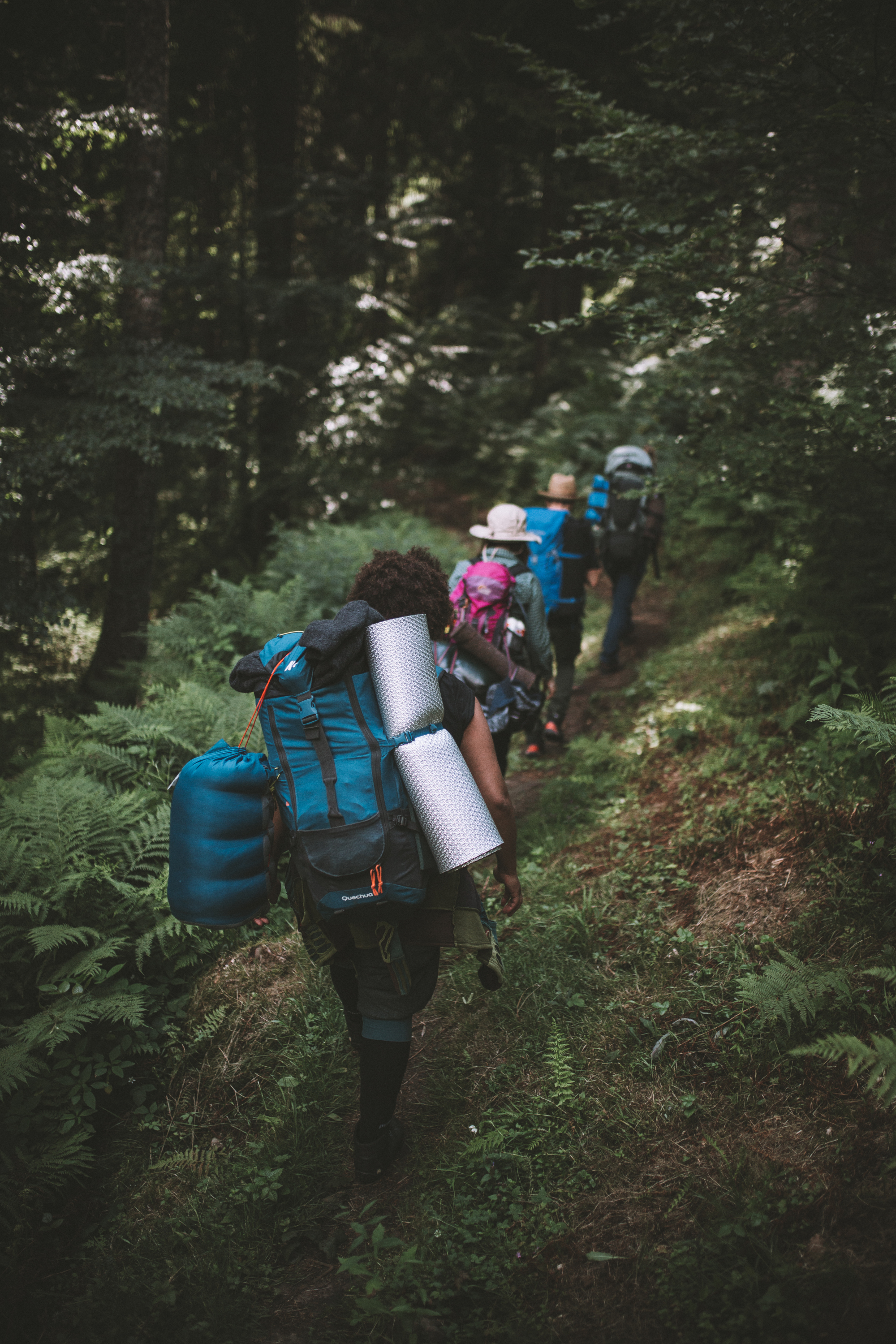
Wenn du noch mehr über eine nachhaltige Lebensführung erfahren möchtest, besuche diese Seiten und du wirst bestimmt fündig:
https://www.wwf.de/aktiv-werden/tipps-fuer-den-alltag
https://www.psychologistsforfuture.org
https://www.bundjugend.de/projekte/mit-suffizienz-zum-guten-leben-fuer-alle /
https://www.bundjugend.de/projekte/mit-suffizienz-zum-guten-leben-fuer-alle/suffizienz-im-alltag/
If you want to learn more about ecology, visit the websites of Greenpeace or WWF in the “take action” section
Je peux également visiter les sites de Greenpeace, WWF et Zerowaste dans la rubrique agir, la newsletter des "mardis verts" ou encore la chaîne youtube “On est prêt”.
Enfin je peux participer et me former avec un atelier collectif et ludique : La Fresque du Climat. (https://nosgestesclimat.fr/fin?details=t3.88a1.75s1.11d0.42l0.33n0.08)
https://www.youtube.com/@onestpret_officiel/featured
https://www.greenpeace.fr/agir/chaque-geste-compte/
https://www.wwf.fr/agir-au-quotidien
Der Flyer zum Download. Flyer for download.
Hier findest du den Flyer bald zum Download, der die wichtigsten Tipps zusammenfasst.
Weitere Nachrichten
Zur Person

Team Wildnisbildung
Begeistert im Nationalpark für Wildnis – und bloggt für euch, um Eindrücke aus dem Nationalpark zu euch nach Hause und Anregungen in euren Alltag zu bringen.
Tel.: +49 7842 9 96 54 25
wildnisbildung@nlp.bwl.de

